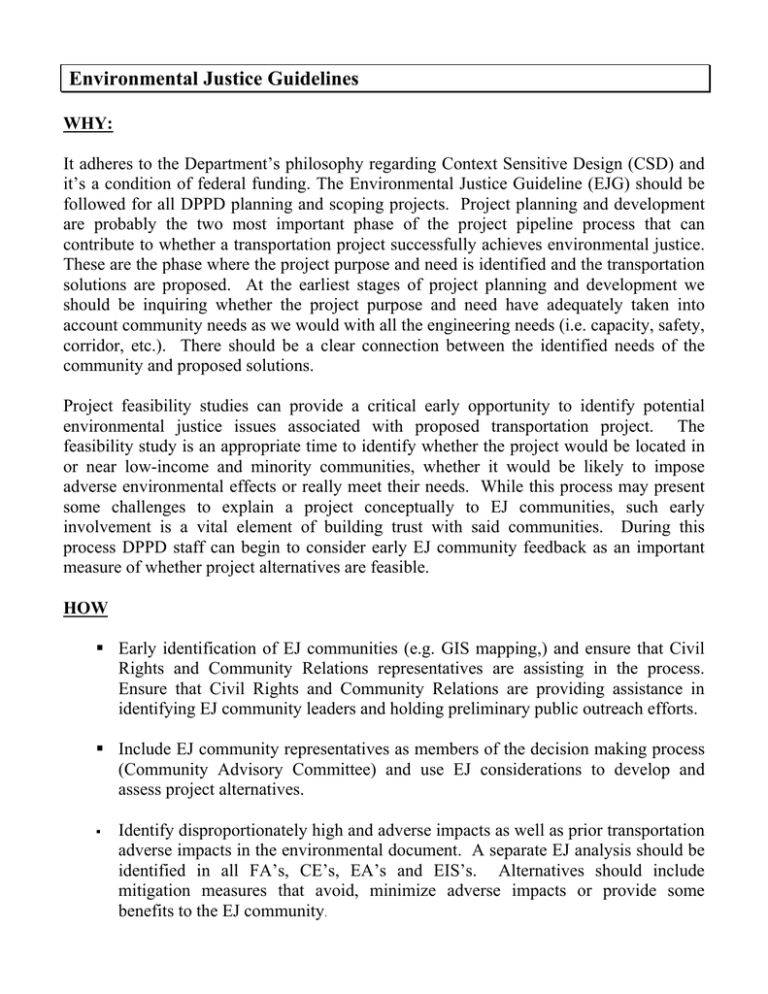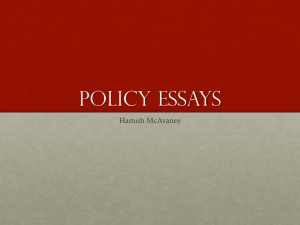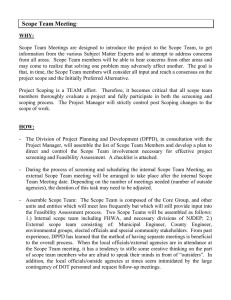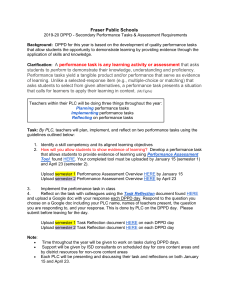Environmental Justice Guidelines
advertisement

Environmental Justice Guidelines WHY: It adheres to the Department’s philosophy regarding Context Sensitive Design (CSD) and it’s a condition of federal funding. The Environmental Justice Guideline (EJG) should be followed for all DPPD planning and scoping projects. Project planning and development are probably the two most important phase of the project pipeline process that can contribute to whether a transportation project successfully achieves environmental justice. These are the phase where the project purpose and need is identified and the transportation solutions are proposed. At the earliest stages of project planning and development we should be inquiring whether the project purpose and need have adequately taken into account community needs as we would with all the engineering needs (i.e. capacity, safety, corridor, etc.). There should be a clear connection between the identified needs of the community and proposed solutions. Project feasibility studies can provide a critical early opportunity to identify potential environmental justice issues associated with proposed transportation project. The feasibility study is an appropriate time to identify whether the project would be located in or near low-income and minority communities, whether it would be likely to impose adverse environmental effects or really meet their needs. While this process may present some challenges to explain a project conceptually to EJ communities, such early involvement is a vital element of building trust with said communities. During this process DPPD staff can begin to consider early EJ community feedback as an important measure of whether project alternatives are feasible. HOW Early identification of EJ communities (e.g. GIS mapping,) and ensure that Civil Rights and Community Relations representatives are assisting in the process. Ensure that Civil Rights and Community Relations are providing assistance in identifying EJ community leaders and holding preliminary public outreach efforts. Include EJ community representatives as members of the decision making process (Community Advisory Committee) and use EJ considerations to develop and assess project alternatives. Identify disproportionately high and adverse impacts as well as prior transportation adverse impacts in the environmental document. A separate EJ analysis should be identified in all FA’s, CE’s, EA’s and EIS’s. Alternatives should include mitigation measures that avoid, minimize adverse impacts or provide some benefits to the EJ community.






